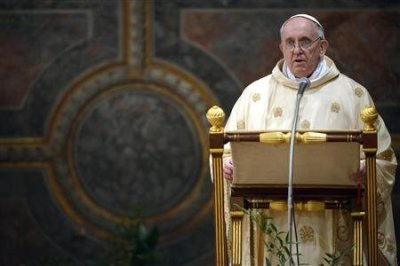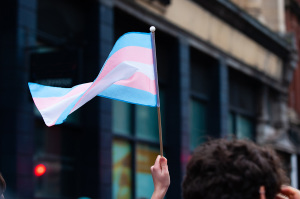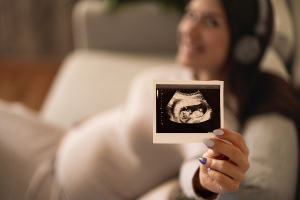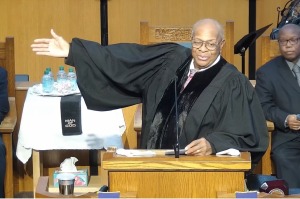Has the Catholic Church Changed Its Teaching on Gay Marriage?

When you went to bed this past Sunday evening, the Catholic Church taught the following:
Marriage is indissoluble.
Catholics who attempt marriage following a divorce—without a declaration that their first bond wasn't after all a valid marriage—enter a (presumptively) adulterous relationship. So long as they maintain a sexual relationship with their new partner, they cannot judge themselves to be in a state of grace and therefore cannot worthily receive Holy Communion.
To return to the sacrament, the partners must repent—which requires ending the new sexual relationship—and be absolved.
Marriage is the conjugal union of sexually complementary spouses—husband and wife.
Non-marital sexual acts, including all same-sex sexual acts, are seriously sinful.
Same-sex sexual desires are intrinsically disordered: that is, not ordered to the good of conjugal union. Experiencing such desires or inclinations is not sinful, but acting on them is.
Today, when you are reading this essay, the Catholic Church teaches the following:
Marriage is indissoluble.
Catholics who attempt marriage following a divorce—without a declaration that the first bond wasn't after all a valid marriage—enter a (presumptively) adulterous relationship. So long as they maintain a sexual relationship with their new partner, they cannot judge themselves to be in a state of grace and therefore cannot worthily receive Holy Communion.
To return to the sacrament, the partners must repent—which requires ending the relationship—and be absolved.
Marriage is the conjugal union of sexually complementary spouses—husband and wife.
Non-marital sexual acts, including all same-sex sexual acts, are seriously sinful.
Same-sex sexual desires are intrinsically disordered: that is, not ordered to the good of conjugal union. Experiencing such desires or inclinations is not sinful, but acting on them is.
Now, if you've been reading the papers or watching television or visiting blogs and online news sites, you may be thinking:
"Hang on there, professor. Haven't you heard? On Monday the Catholic Church changed its teachings on marriage and sexuality. There has been an 'earthquake,' a 'seismic shift.' Things will never be the same. The Church now welcomes remarried people to communion, has dropped its objections to homosexual conduct, and denies that homosexual desires are 'intrinsically disordered.' Or it's about to do all of that. Francis is a new kind of Pope, and it's a new day. He has brought Catholicism into line with the teachings of the Episcopal Church USA, the Unitarian Universalists, and the New York Times editorial board."
If you are indeed thinking something like that, it's because you've heard about something called a relatio post disceptationem, a document released on Monday as an interim report on discussions occurring at a Vatican synod of bishops (called an "extraordinary" synod because it is preparatory to a larger synod—an "ordinary" synod—that will occur next year) on contemporary challenges to the family.
The relatio, then, is raw material for this week's discussion, which will prepare for next year's discussion, which may provide fodder for a document by the Pope.
So it's conducive to something preparatory to something (possibly) advisory.
It has no teaching authority whatsoever.
What's more, it proposed no changes—none—in the doctrine or moral teaching of the Church.
It did not propose reversing the teaching on the indissolubility of marriage, the requirement that divorced Catholics living in adulterous pseudo-marriages refrain from taking Holy Communion, the conjugal nature of marriage as a union of husband and wife, the grave immorality of non-marital (including same-sex) sexual acts, or the disorder of sexual desires not ordered to conjugal union.
So why did the media explode with news about an "earthquake" in the Church's teachings of sex and marriage? What were liberal Catholics such as Jesuit Father James Martin, who would like to see the Church change some of its teachings, crowing about?
The cause was evidently a combustible blend of inartful drafting, media ignorance, and liberal wishful thinking. The ignorance concerned the status of the relatio, the authority of an extraordinary synod, and the Church's historic teachings on every human being's inherent dignity. The wishful thinking was provoked by language in the document attempting to express in a contemporary idiom the Church's ancient and beautiful teaching that we must speak the truth in love, and never fail to love the sinner even while rejecting the sin.
And so the relatio rightly repeats the Church's teaching that persons who experience same-sex attraction must be loved and welcomed and never rejected. Those who flout the Church's teachings must also be loved and welcomed and, it is hoped, led to embrace the Gospel fully, repent, and be reconciled. The gifts, good qualities, and contributions of such persons are affirmed—as they should be—and special mention is made, "without denying the moral problems connected to homosexual unions," of the "mutual aid to the point of sacrifice" that persons in such unions sometimes offer in support of each other. But the Church has never denied any of this.
One sentence in the relatio's treatment of the pastoral care of same-sex attracted persons has generated a good deal of confusion—provoking criticism from traditionally minded Catholics and arousing futile hopes among liberals. It takes the form of a rhetorical question:
Are our communities capable of providing that [i.e., providing "homosexuals" a "welcoming home"], accepting and valuing their sexual orientation, without compromising Catholic doctrine on the family and matrimony?
The concept of "sexual orientation" obscures more than it illuminates because it is deeply ambiguous. As any social scientist will tell you, its meaning is notoriously unstable. It can refer to one's self-understanding. Or to one's inclinations: fleeting or lasting, exclusive or dominant or not; to certain forms of sexual partnership or affective companionship or both. Or to what one does—ever, or perhaps just consistently.
So, for example, some Catholics identify as "gay" despite wholly embracing and living by the Church's teaching on sex and marriage. Why? They use "orientation" to refer to a very broad set of dispositions to, and gifts for, deeply committed companionship and service—dispositions and gifts that they think are distorted or perverted, not truly fulfilled, by same-sex sexual contact.
With such a capacious sense of "orientation"—as something only accidentally linked to disordered sexual desire—one can easily say that it can produce good fruit: e.g., what the Catechism calls "disinterested friendship" to which same-sex attracted persons are called. Some Catholics who firmly accept the Church's teaching and live by it view "orientation" in this sense as the sign of a special vocation to a sort of ministry of deep but decidedly non-sexual friendship.
Indeed, even the temptations that might accompany such an "orientation" can—like any cross—bear fruit in the lives of those who experience them and everyone they affect: in greater sympathy for those marginalized or deemed "abnormal," for example, and in deeper identification with Christ crucified.
But here again, there's nothing new. It has always been the Church's belief that out of the brokenness of a fallen creation, God brings good and more good. Our affective brokenness is no exception. Far from denying that same-sex sexual desire is intrinsically disordered, this point—a fair reading of the relatio's statement—presupposes it.
I myself think that "orientation" and associated terms ("straight," "gay," etc.) are too problematic—too misleading, too suggestive of differences as morally and spiritually important as those denoted by "male" and "female"—to be worth using. I think their use sows confusion.
But—and here's another critical point—the very bishops who authored the relatio now agree.
At the press conference at which Synod officials presented the relatio, a puzzled reporter asked Cardinal Erdo of Hungary, who took the lead in presenting it, what the sentence about valuing orientation meant. He in turn immediately called on Italian Archbishop Bruno Forte to answer it, saying, "he who wrote the text must know what it is talking about." And Forte responded with a clarification that simply explodes the liberal media's wishful thinking: "The fundamental idea," he said, "is the centrality of the person independently of sexual orientation."
So, again in line with historic Catholic teaching, the Archbishop declared that the person—regardless of his desires or personal challenges—is to be respected and valued, independently of those desires or challenges. In light of this clarification, the final document will surely have revised what the interim report's authors now effectively admit was a misleading sentence.
The relatio also addressed the situation of those who have attempted remarriage after divorce without a declaration that the first relationship wasn't a valid marriage. Although the Church cannot admit people to Holy Communion while they live in a presumptively adulterous relationship, it does call on all Catholics to treat them with acceptance, compassion, and love. And, again, the hope is that Mass attendance and spiritual communion will lead such persons out of adultery and back to the sacraments. The relatio reports—though it is hardly news—that some bishops expressed the view that "spiritual communion" is not enough. The obstacle for them, however, is the Church's historic, solemn, and settled teaching on (a) the indissolubility of marriage, (b) the gravely immoral nature of non-marital sex, and (c) the need for persons to be in a state of grace in order worthily to receive Holy Communion.
So was there an earthquake? A seismic shift? Hardly. Rather, there was a reaffirmation, as one would have expected, of the Church's moral teachings in their wholeness: sin is sin and must be rejected. That teaching is untouched. Sinners are precious human beings, who must never be rejected. That teaching is resoundingly reaffirmed. Sinners—which means all of us—must always be loved. Thanks be to God for that.
This column was originally published on the Public Discourse.





























